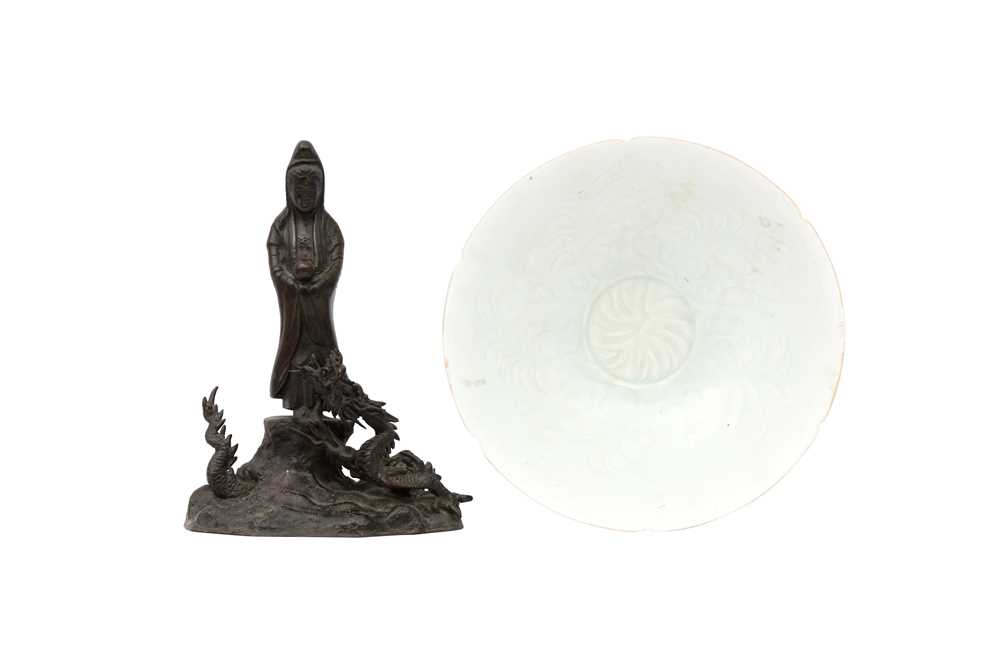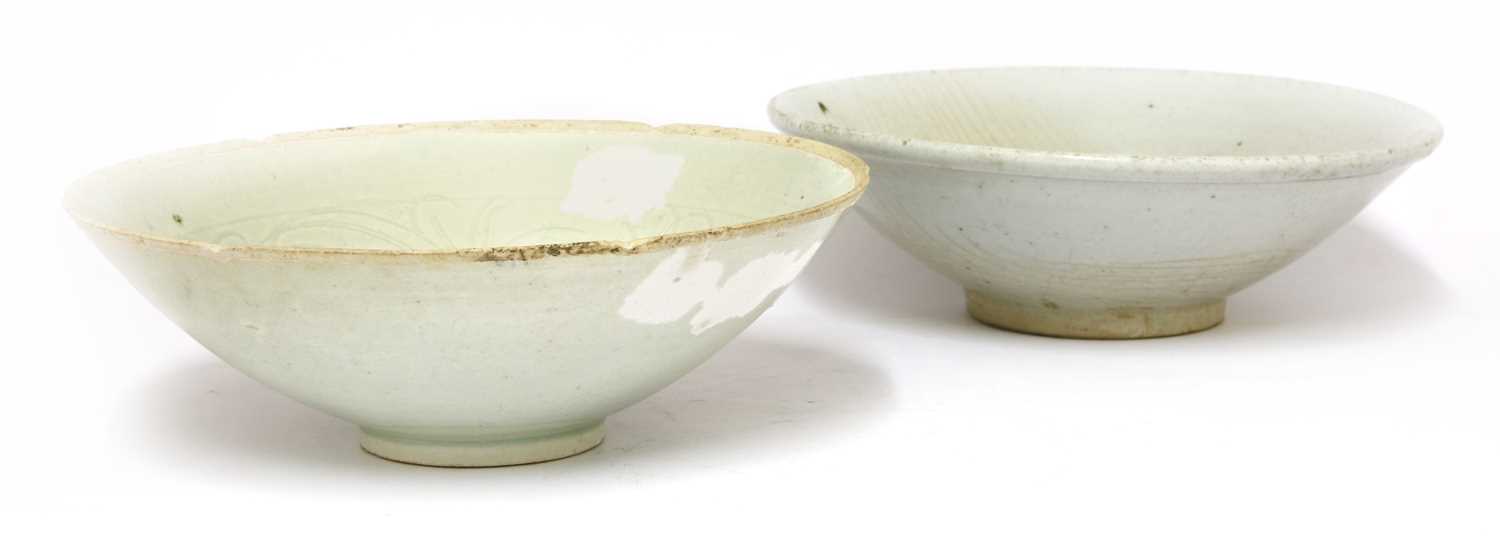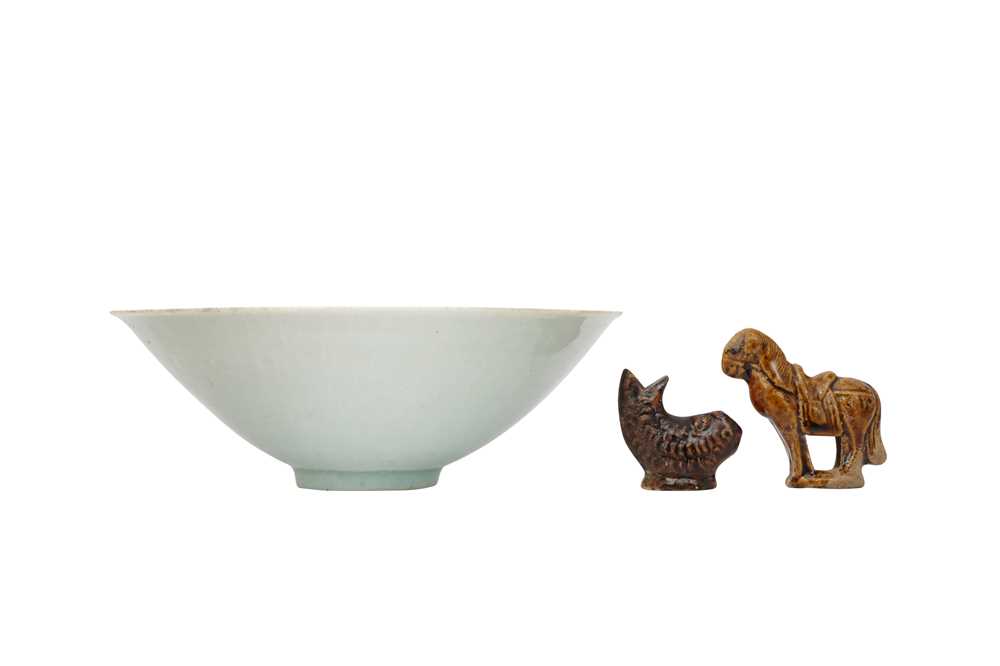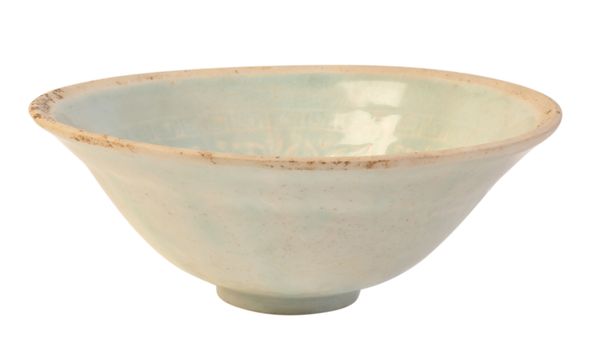A Chinese Qingbai bowl, ca. 12th century, of conical shape, thinly moulded with alternating designs of two boys playing amid lotus flowers and pomegranates, underscoring the auspicious wish for male offspring, all below a beaded border, the exterior with a sequence of diagonal lines, covered with a transparent glaze of pale blue tone, the rim unglazed, 17.3cm diameter, 3cm high Provenance: Private European Collection. 宋 青白釉孩子莲花石榴纹碗 Combined with children, lotuses underscore auspicious symbolism for wishes for male sons. Children were also found in association with lotuses. Historical sources relating to the Song dynasty suggest that the imagery of presenting children and lotuses, to convey the wish for progeny, derived from the common folk. Describing folk events taking place in the Southern Song capital of Linan, in Zhejiang, the Mengliang Lu 梦梁渌(Memoirs of Linan) records that, during the Double Seventh festivals, images of children and lotuses were purchased on that day as auspicious emblems, popular among women desiring sons. The Double Seventh Festival fell on the seventh day of the seventh lunar month, and celebrated the coming of sons, originating from a folk legend by which, on that day, the Weaving Maid and the Cowherd, symbolizing the two constellations located on the opposite sides of the Milky Way, met. Ellen Johnston, Auspicious images of children in China: Ninth to thirteenth century, in Orientations, 27, 47-52, 1996; Meng Yuanlao, Dongjing menghua lu 东京梦华录 (the Eastern capital: a dream of splendours past), 1986. Collection.
A Chinese Qingbai bowl, ca. 12th century, of conical shape, thinly moulded with alternating designs of two boys playing amid lotus flowers and pomegranates, underscoring the auspicious wish for male offspring, all below a beaded border, the exterior with a sequence of diagonal lines, covered with a transparent glaze of pale blue tone, the rim unglazed, 17.3cm diameter, 3cm high Provenance: Private European Collection. 宋 青白釉孩子莲花石榴纹碗 Combined with children, lotuses underscore auspicious symbolism for wishes for male sons. Children were also found in association with lotuses. Historical sources relating to the Song dynasty suggest that the imagery of presenting children and lotuses, to convey the wish for progeny, derived from the common folk. Describing folk events taking place in the Southern Song capital of Linan, in Zhejiang, the Mengliang Lu 梦梁渌(Memoirs of Linan) records that, during the Double Seventh festivals, images of children and lotuses were purchased on that day as auspicious emblems, popular among women desiring sons. The Double Seventh Festival fell on the seventh day of the seventh lunar month, and celebrated the coming of sons, originating from a folk legend by which, on that day, the Weaving Maid and the Cowherd, symbolizing the two constellations located on the opposite sides of the Milky Way, met. Ellen Johnston, Auspicious images of children in China: Ninth to thirteenth century, in Orientations, 27, 47-52, 1996; Meng Yuanlao, Dongjing menghua lu 东京梦华录 (the Eastern capital: a dream of splendours past), 1986. Collection.















Testen Sie LotSearch und seine Premium-Features 7 Tage - ohne Kosten!
Lassen Sie sich automatisch über neue Objekte in kommenden Auktionen benachrichtigen.
Suchauftrag anlegen